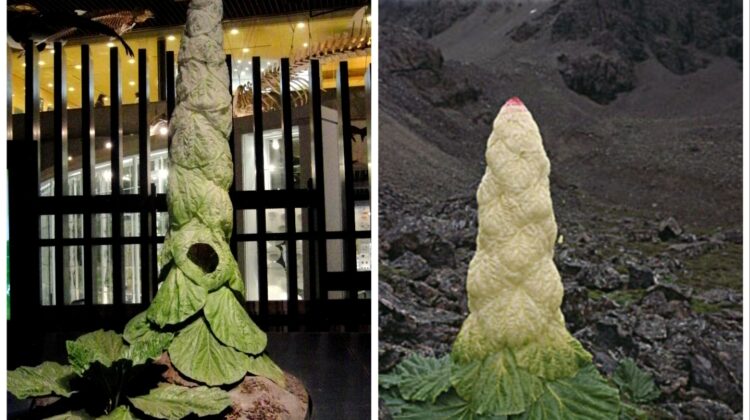
In the remote reaches of the Himalayan mountains, a botanical wonder known as Rheum Nobile, or the Sikkim Rhubarb, silently thrives. This giant herbaceous plant, native to the Himalayan region, has intrigued botanists and nature enthusiasts for centuries. Standing at a striking 1 to 2 meters in height, the monocarpic inflorescences of Rheum Nobile rise majestically above the surrounding shrubs and low herbs, making it visible across valleys for miles around.
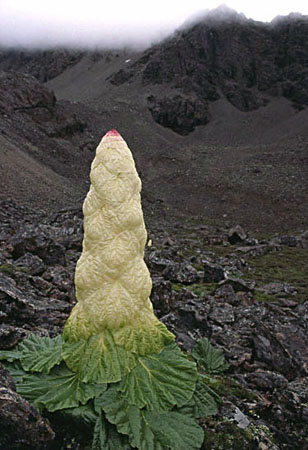
The Glasshouse Marvel
One of the most fascinating aspects of Rheum Nobile is its distinctive outer curtain of translucent bracts. These bracts allow visible light to pass through, creating a greenhouse effect, while effectively blocking harmful ultraviolet radiation. This remarkable adaptation serves as a defense mechanism against the intense UV-B exposure and extreme cold prevalent in its high-altitude habitat.
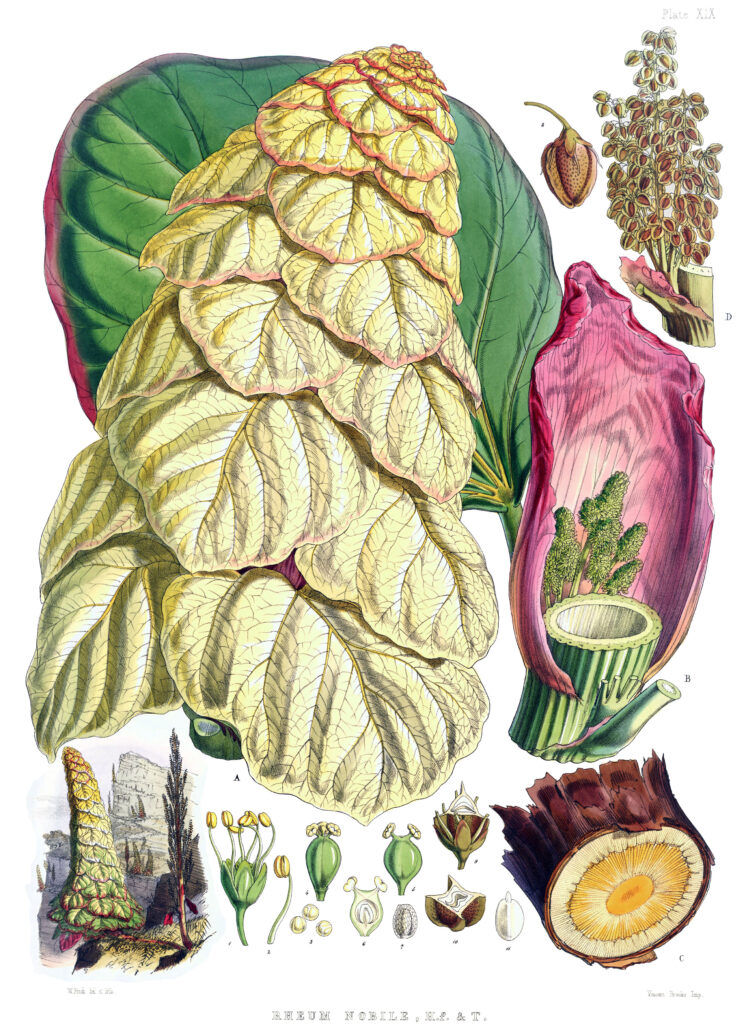
A Botanical Marvel
An individual Rheum Nobile presents itself as a conical tower adorned with delicate, straw-colored, shining, translucent bracts, some of which have pink edges. At its base, large, glossy, green radicle leaves with red petioles and nerves form a broad foundation. Beneath these leaves, membranous, fragile, pink stipules provide added intrigue. Within these stipules, you’ll find short-branched panicles of diminutive green flowers.
As if these features weren’t captivating enough, the plant’s roots are equally impressive. Often reaching lengths of 1 to 2 meters and as thick as an arm, these roots are a vibrant shade of yellow on the inside. However, after flowering, the stem undergoes transformation as the bracts gradually separate from one another, taking on a coarse red-brown hue. As the fruits ripen, the bracts fall away, leaving behind a striking sight—a ragged stem adorned with panicles of deep brown pendulous fruits.
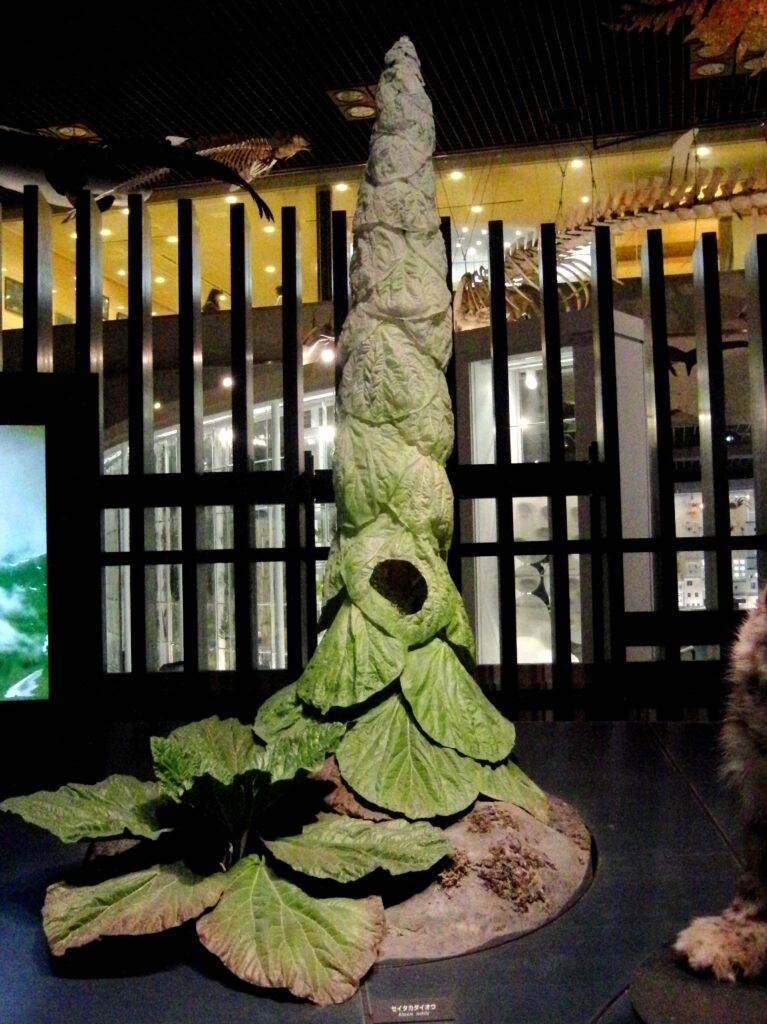
Myth vs. Reality
Photographs of Rheum Nobile’s inflorescence have been widely shared on social media, often accompanied by the erroneous claim that it blooms only once every 400 years in the Himalayas. In reality, this giant of the Himalayas blooms annually in June and July. It is not only one of the largest plant species in the region but also a vital component of the mountainous ecosystems of Nepal, Sikkim, Bhutan, and Tibet, flourishing at altitudes of up to 4000 meters. Rheum Nobile can reach heights of two meters (or six feet) and goes by various names, including Sikkim Rhubarb and Noble Rhubarb.
Unveiling the Chromosomal Mystery
Rheum Nobile possesses a unique karyotype with a chromosome count of 2n=22, setting it apart in the botanical world.
The Protective Bracts
The bracts of Rheum Nobile, measuring 110-170 µm in thickness, serve a crucial role in its survival. They selectively block ultraviolet radiation while allowing nearly all visible light to pass through. This ingenious adaptation protects the developing flowers and apical meristem from the harsh radiation experienced at high altitudes. The primary UV blockers found in these bracts are quercetin flavonoids, including rutin, guaijaverin, hyperin, isoquercitrin, and a unique quercetin derivative.
A Local Delicacy
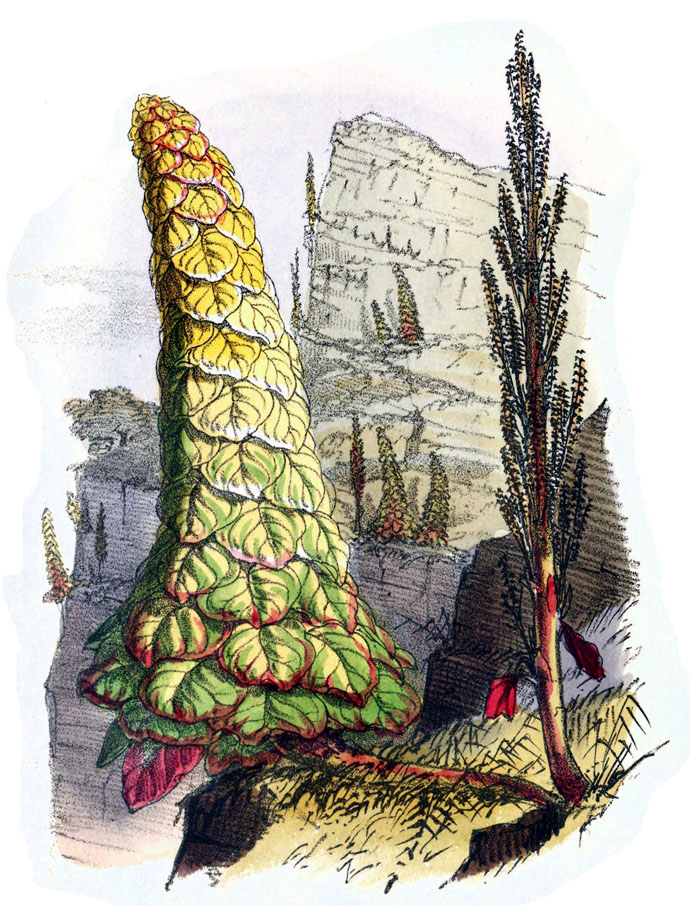
The pleasantly acidic stems of Rheum Nobile are a source of sustenance for local communities, who affectionately call the plant “Chuka.” The stem’s hollow center contains clear, limpid water, adding to its allure.
A Historical Perspective
The first detailed description of Rheum Nobile was penned by Joseph Dalton Hooker and Thomas Thomson in 1855. Hooker’s initial encounter with this botanical marvel left him in awe, describing it as “the most striking of the many fine alpine plants of Sikkim.”
Rheum Nobile, the Sikkim Rhubarb, continues to captivate botanists, adventurers, and nature enthusiasts alike, reminding us of the enduring wonders hidden within the Himalayan wilderness. Its unique adaptations, striking appearance, and rich history make it a true gem of the plant kingdom.

Leave a Reply